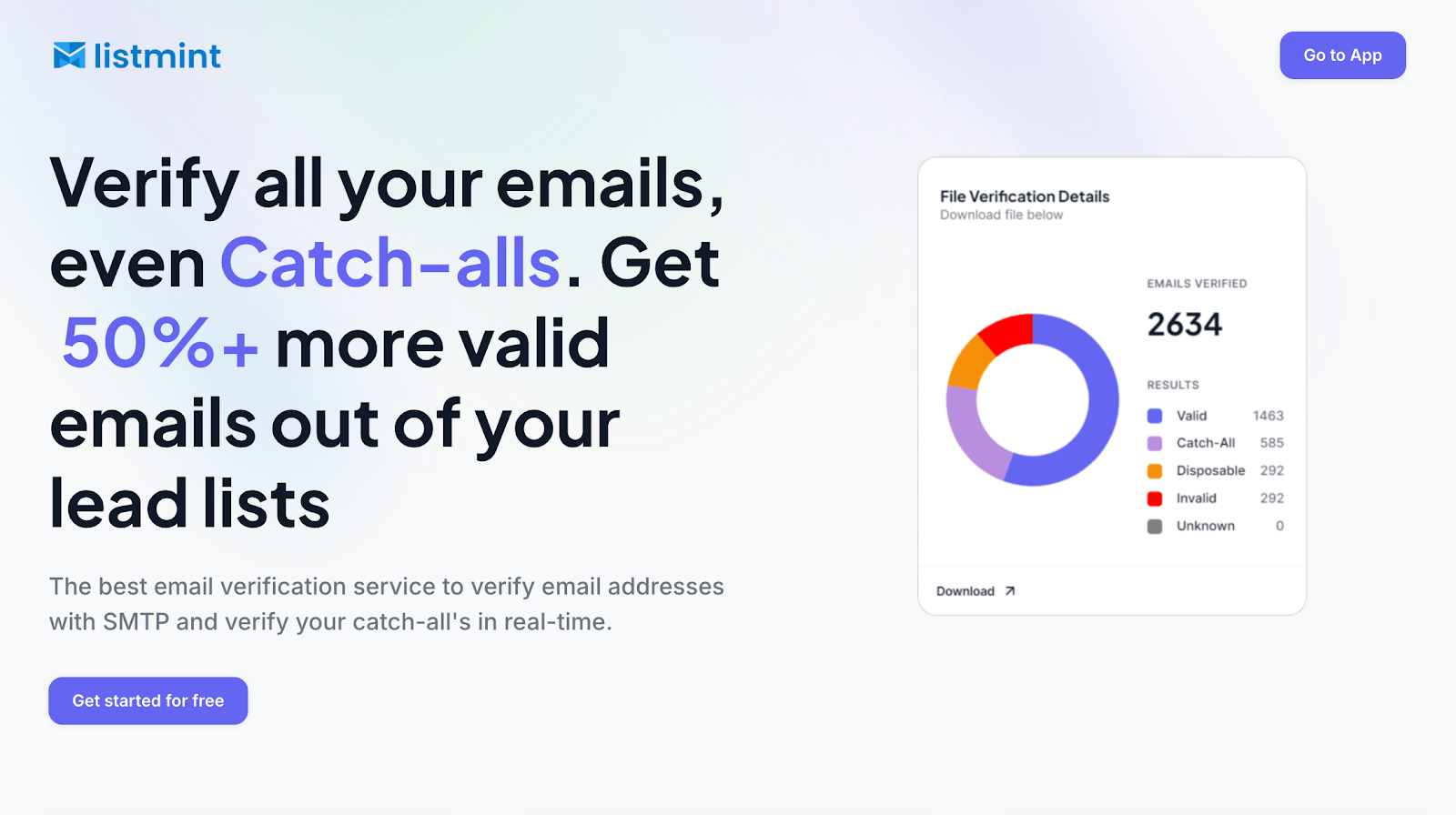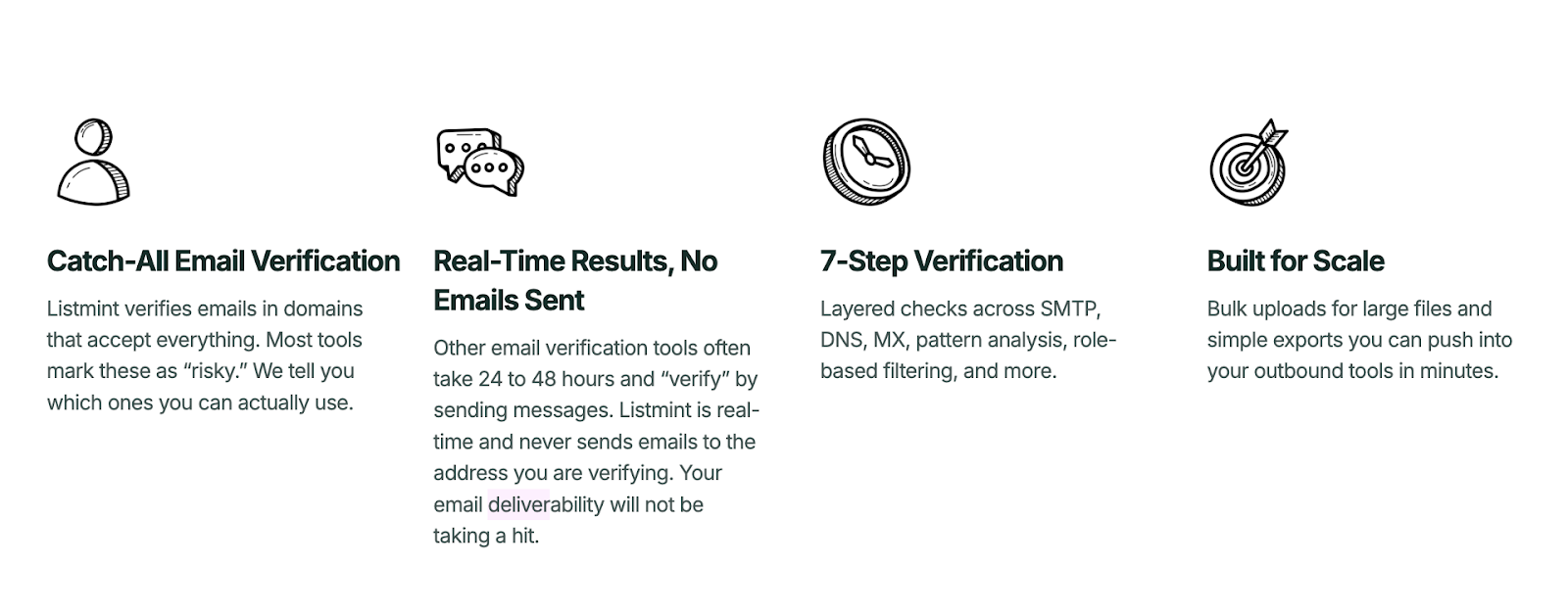
Email deliverability decides whether your message connects with the right people or gets lost before reaching them. A campaign might look great on paper, but if it never makes it into the inbox, performance and budget take a direct hit.
Every sender faces the same challenge: understanding what inbox providers look for when deciding where a message lands.
Knowing those factors gives email marketers the chance to protect their reputation and keep future messages visible.
This article explores what affects email deliverability, highlighting the key elements that influence inbox placement and how senders can address them to keep campaigns on track.
Email deliverability refers to how many of your messages reach the intended recipients’ inboxes instead of bouncing or being filtered.
It is not just about email delivery, which stops once a server accepts the message. Deliverability goes further, measuring if those emails land in the primary inbox where subscribers can actually read them.
For email marketers, strong inbox placement is what separates successful email marketing campaigns from wasted effort.
A high deliverability rate signals to mailbox providers that you are a reputable sender with proper authentication in place and an audience that wants your content.
Poor deliverability, on the other hand, often points to issues like outdated email addresses, inactive subscribers, or content that may trigger spam filters.
Understanding these distinctions helps you focus on best practices that improve your email deliverability and protect long-term results.
Inbox providers rely on many signals to decide where each email lands. Some of these signals come from your data, while others come from how recipients respond to your campaigns.
Together, they shape whether your messages reach the primary inbox, get filtered into the spam folder, or go undelivered. Below are the main factors that affect email deliverability, along with simple steps you can take to keep each one in good standing.
One of the main factors that affects email deliverability is the health of your contact list. Poor list quality makes inbox providers treat you as a risky sender.
Invalid emails and bounced email addresses suggest bad data, while a hidden spam trap signals you are not managing subscribers carefully. Large numbers of inactive subscribers also raise concerns because they point to low engagement.
When lists decay, email campaign performance drops, and the chances of marketing emails landing in the spam folder rise. Even if your content is strong, poor list hygiene damages sender reputation and lowers the deliverability rate.
The simplest way to protect this factor is through regular email hygiene practices, such as verifying addresses and removing outdated contacts.
Email scrubbing helps inbox providers see you as a reputable sender and improves the odds of emails landing in the intended recipients’ inboxes.
Another major factor that affects email deliverability is the use of proper email authentication. Without the right records in place, mailbox providers cannot confirm that you are a legitimate sender, which increases the chance of emails being blocked or flagged.
The core email authentication protocols are:
When these protocols are missing, misaligned, or outdated, deliverability issues often follow. Messages may trigger spam filter behavior, reduce trust with email service providers, and fail to reach subscribers’ inboxes.
Keeping SPF, DKIM, and DMARC aligned across every sending domain is one of the simplest ways to avoid these problems and maintain a positive sender reputation.
Every email you send leaves a trace on your domain and IP address. Inbox providers track those signals to decide if future marketing emails reach the primary inbox or end up in the spam folder.
A positive sender reputation shows that your emails are trusted, while a poor sender reputation tells internet service providers that your practices may harm their users.
High bounce rates, frequent spam complaints, and large groups of unengaged subscribers all weaken domain reputation and lower inbox placement.
For high-volume programs, using a dedicated IP address gives more control over reputation. With a dedicated IP, the sender score reflects only your own activity rather than being influenced by other senders on a shared IP.
Protecting this factor means keeping bounce rates low, reducing spam complaints, and sending consistent volumes. Those steps help inbox providers see you as a reputable sender and improve the chances of emails landing in the recipient’s main inbox.
Content is one of the clearest signals that affect email deliverability. Every email client and inbox provider reviews the words, formatting, and links inside your message to decide if it belongs in the inbox or the spam folder.
Poorly written subject lines, misleading claims, or the overuse of spam trigger words often cause spam filters to block or redirect marketing messages.
Weak design choices, such as heavy images or broken email templates, can also create problems across different devices and providers.
Engagement is shaped here, too. Relevant content encourages subscribers to open and interact, while generic material is often deleted without a second glance. Those patterns tell the email service provider how to treat future campaigns.
Keeping subject lines clear, balancing text with visuals, and linking only to reputable domains are simple ways to avoid filter issues. Strong, accurate content increases trust and gives your campaigns a better chance of landing in subscribers’ inboxes.
Inbox providers measure how email recipients interact with your campaigns. These engagement metrics help them decide if your messages belong in the primary inbox or the spam folder.
Positive actions such as opens, clicks, replies, or safe-listing your address signal trust. Negative actions, including spam complaints, ignored emails, or repeated deletions, reduce that trust. Over time, large groups of unengaged subscribers make future messages harder to deliver.
High unsubscribe rates also matter. If recipients cannot find a clear unsubscribe link, they often mark the email as spam instead. Each complaint weakens the reputation and lowers the deliverability rate.
Protecting this factor means focusing on relevance. Sending relevant and personalized content, maintaining a healthy list, and tracking engagement patterns help show inbox providers that your messages are valuable.
Strong engagement increases the odds that campaigns reach the intended inbox instead of being filtered out.
Outside the main factors, other issues can also affect inbox placement. These may not be as obvious, but they still create serious deliverability issues if ignored.
Keeping these details in check supports healthy inbox placement. Small adjustments here can prevent sudden drops and help protect long-term campaign performance.
Deliverability decides if campaigns have a chance to work at all. Messages that miss the inbox cannot drive opens, clicks, or revenue.
Gmail and Yahoo now require strong authentication, easy unsubscribe, and very low spam complaint rates, which raises the bar for every sender. According to Yahoo, they flag complaint rates above about 0.3% and expect SPF, DKIM, and DMARC in place.
Email remains one of the highest-ROI marketing channels. According to Litmus, many businesses reporting returns between $10 and $50 for every $1 spent.
That kind of performance makes inbox placement a direct driver of revenue, and lost placement translates into lost results.
Deliverability also affects trust. Providers evaluate authentication, complaint history, and engagement before routing each message. Strong performance across those signals keeps campaigns visible. Weak signals lead to filtering or blocking.
Every recipient’s email provider uses rules to decide where a message lands.
Gmail, Yahoo, and Outlook all scan incoming mail and decide if it belongs in the primary inbox, a secondary tab, or the spam folder. Gmail’s bulk sender guidelines outline many of the standards that shape these decisions.
Key checks include:
Strong performance across these signals shows inbox providers you are a reputable sender. Weak performance often results in filtered or blocked campaigns.
Clean data is the foundation of strong deliverability, and that’s where Listmint makes the biggest difference. Unlike traditional tools that flag catch-all addresses as “risky” or leave them unresolved, Listmint fully verifies them in real time.

This means marketers no longer need to discard valuable leads or risk sending to unverified contacts that harm the sender reputation.
Listmint also gives teams speed and clarity. Other verifiers can take up to 48 hours and often rely on test emails to confirm addresses.

Listmint’s API and platform verify both standard and catch-all email addresses instantly without ever sending mail to the address. This accuracy directly reduces bounces, keeps campaigns safe from spam traps, and protects long-term inbox placement.
With over 1 billion emails verified and 99%+ accuracy across SMTP and catch-all checks, Listmint helps B2B and B2B2C teams maximize the value of their lists.
Business owners can use the platform directly, while companies and agencies can integrate through the email real-time API to verify at scale and even resell Listmint’s unique verification capabilities.
Marketers, agency owners, and sales teams rely on Listmint every day to keep their campaigns safe and effective. Their feedback highlights how accurate verification, real-time results, and catch-all email validation translate into stronger deliverability and better outcomes.

⭐⭐⭐⭐⭐
SMTP + Catch-all validation in one platform - the most cost-effective + fastest way to get as many emails validated as possible.
– Matt Lucero, Founder at Anevo Marketing

⭐⭐⭐⭐⭐
ListMint makes it extremely easy to verify email credits, both Standard & Catch-Alls, all in one platform. It saves my team hours of our time, being able to do it all in one place.
– Ryan S., CEO

⭐⭐⭐⭐⭐
It's the best platform for verifying emails, both in terms of cost and logistics. I run an agency with 40+ clients and was running around 70-80 cold email campaigns at a time. Using ListMint simplifies the email verification process and does a great job of only giving us the valid emails, so we avoid email bounces. The ability to do both standard and catch-all email verification within the same platform is a game-changer.
– Liz M., Mirraponte Marketing

⭐⭐⭐⭐⭐
It verifies both standard and catch-all emails in one spot with a less than 1% bounce rate.
– Jack M., Centauri Marketing

⭐⭐⭐⭐⭐
The absolute best thing about Listmint is that you get soft and hard (catch-all) email verification in one tool and don't need separate tools for it anymore.
– Rens M., MERKX Agency
Listmint gives senders the confidence to treat verified catch-alls as safe, valid data instead of wasted leads. That accuracy keeps campaigns efficient, reduces costs, and protects deliverability where it matters most: the inbox.
With over 84% of catch-alls verified as valid on average, teams using Listmint unlock contacts that other platforms simply write off.

Email deliverability shapes the success of every campaign. Reaching the inbox means messages get seen, opened, and acted on. Missing it means wasted effort and lost opportunities.
The factors that influence deliverability are within reach, but they require consistent attention to data quality, reputation, and engagement.
Listmint provides the missing layer of protection. With instant verification for both standard and catch-all emails, Listmint gives teams the accuracy and confidence needed to keep their messages reaching the right people.
Clean data, lower bounce rates, and stronger inbox placement all start with the right foundation.
Ready to safeguard your campaigns? Get started for free with Listmint today and see how much stronger your results can be.
The 60/40 rule suggests keeping about 60% text and 40% images in an email. This balance makes content easier to scan, helps you avoid spam trigger words, and reduces the chance of messages being flagged by a recipient’s email provider.
Improving deliverability starts with healthy lists, aligned authentication records, and an effective email marketing strategy.
Using a double opt-in process confirms valid subscribers, while sending relevant content and monitoring engagement metrics helps protect users and improve inbox placement.
The five Ts are Target, Test, Track, Tweak, and Timing. Following these principles creates stronger campaigns, supports a reliable email marketing program, and increases the odds of long-term email marketing success.
Verify all your emails, even Catch-alls in real-time with our Email Verification Software.
Create an account for free.